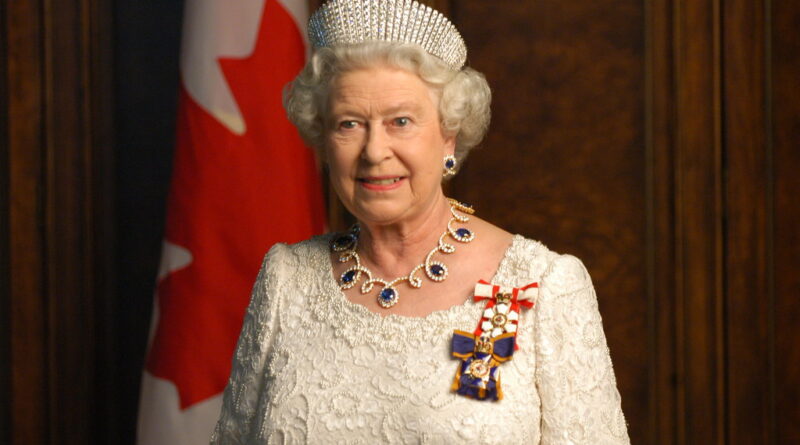Queen Elizabeth
Queen Elizabeth II: A Reign of Grace, Duty, and Historical Significance
Introduction
Queen Elizabeth II, the longest-reigning monarch in British history, has been a steadfast presence on the world stage for more than seven decades. Her reign has witnessed profound social, political, and cultural changes, making her a symbol of continuity and adaptability. In this article, we will explore the life and reign of Queen Elizabeth II, examining the key moments that have defined her legacy.
Early Life and Ascension to the Throne
Born on April 21, 1926, as Elizabeth Alexandra Mary Windsor, Queen Elizabeth II came into the world during a time of great change between the two World Wars. She was the first child of the Duke and Duchess of York, later known as King George VI and Queen Elizabeth (the Queen Mother).
Elizabeth’s idyllic childhood took an unexpected turn with the abdication of her uncle, King Edward VIII, in 1936. This event thrust her father onto the throne and Elizabeth into the role of heir presumptive. Little did she know that this early experience would shape her future sense of duty and commitment to the monarchy.
World War II and Princess Elizabeth
During World War II, Princess Elizabeth played a symbolic role in boosting the morale of the British people. She trained as a driver and mechanic in the Auxiliary Territorial Service and made her first public speech at the age of 14, expressing solidarity with the children evacuated during the war.
The death of her father in 1952 marked the end of Princess Elizabeth’s private life, as she ascended to the throne at the age of 25. Her coronation in 1953 was a momentous occasion, televised for the first time and witnessed by millions around the world. Queen Elizabeth II embarked on her reign with a sense of duty and a commitment to modernize the monarchy.
A Changing World: The 20th Century to Present
As the British Empire transformed into the Commonwealth, Queen Elizabeth’s role evolved alongside the changing global landscape. The Suez Crisis of 1956, the Troubles in Northern Ireland, and the decolonization of Africa and the Caribbean marked challenging periods for the Queen and the United Kingdom.
The latter half of the 20th century and the beginning of the 21st century saw a progressive shift in social norms and values. Queen Elizabeth navigated these changes with grace, adapting to new cultural landscapes while upholding traditional values. The monarchy faced scrutiny and challenges, but the Queen’s unwavering commitment to service and duty helped maintain its relevance.
Family and Personal Challenges
Queen Elizabeth II’s personal life has been marked by both joyous moments and profound challenges. Her marriage to Prince Philip, the Duke of Edinburgh, in 1947, brought stability and partnership to her life. The couple had four children—Charles, Anne, Andrew, and Edward—and weathered the storms of public scrutiny, including Diana, Princess of Wales’s tragic death in 1997.
The Queen’s dedication to her role as a mother and grandmother is evident in her efforts to maintain a balance between her public duties and family responsibilities. Despite the controversies that have surrounded the royal family, Queen Elizabeth has remained a pillar of strength and continuity.
Silver Jubilee, Golden Jubilee, and Diamond Jubilee
The Queen’s Silver Jubilee in 1977, Golden Jubilee in 2002, and Diamond Jubilee in 2012 were milestones that celebrated her enduring reign. These jubilees were marked by festivities, public celebrations, and reflections on the significant changes witnessed during her time on the throne.
The Diamond Jubilee, in particular, highlighted the Queen’s ability to connect with the people. Her message of gratitude and service resonated globally, emphasizing the importance of community, resilience, and shared history.
Modernization of the Monarchy
Queen Elizabeth II has played a crucial role in modernizing the monarchy. Her willingness to adapt to the times while maintaining the institution’s core values has been instrumental in ensuring its continued relevance. The opening of Buckingham Palace to the public, the televised Christmas message, and engagement with social media platforms showcase the Queen’s efforts to connect with the public in new ways.
Public Perception and Criticism
Throughout her reign, Queen Elizabeth II has faced both admiration and criticism. Supporters commend her dedication to duty, her ability to navigate political neutrality, and her role as a unifying figure. Critics, on the other hand, question the relevance of the monarchy in the modern era and the cost of maintaining a hereditary system.
Regardless of differing opinions, Queen Elizabeth’s resilience and commitment to her role have earned her respect on the global stage. Her role as a constitutional monarch, where political power is largely symbolic, sets her apart from traditional heads of state.
Legacy and Future
As Queen Elizabeth II enters the twilight of her reign, discussions about the future of the monarchy intensify. The transition to a new generation, led by her eldest son, Prince Charles, prompts reflections on the legacy she leaves behind.
Queen Elizabeth II’s legacy is one of stability, service, and adaptability. Her reign has witnessed the transformation of the United Kingdom and the Commonwealth, and her impact on the monarchy’s modernization is undeniable. As she approaches the record of becoming the longest-reigning monarch in world history, Queen Elizabeth II remains an enduring symbol of continuity in an ever-changing world.
